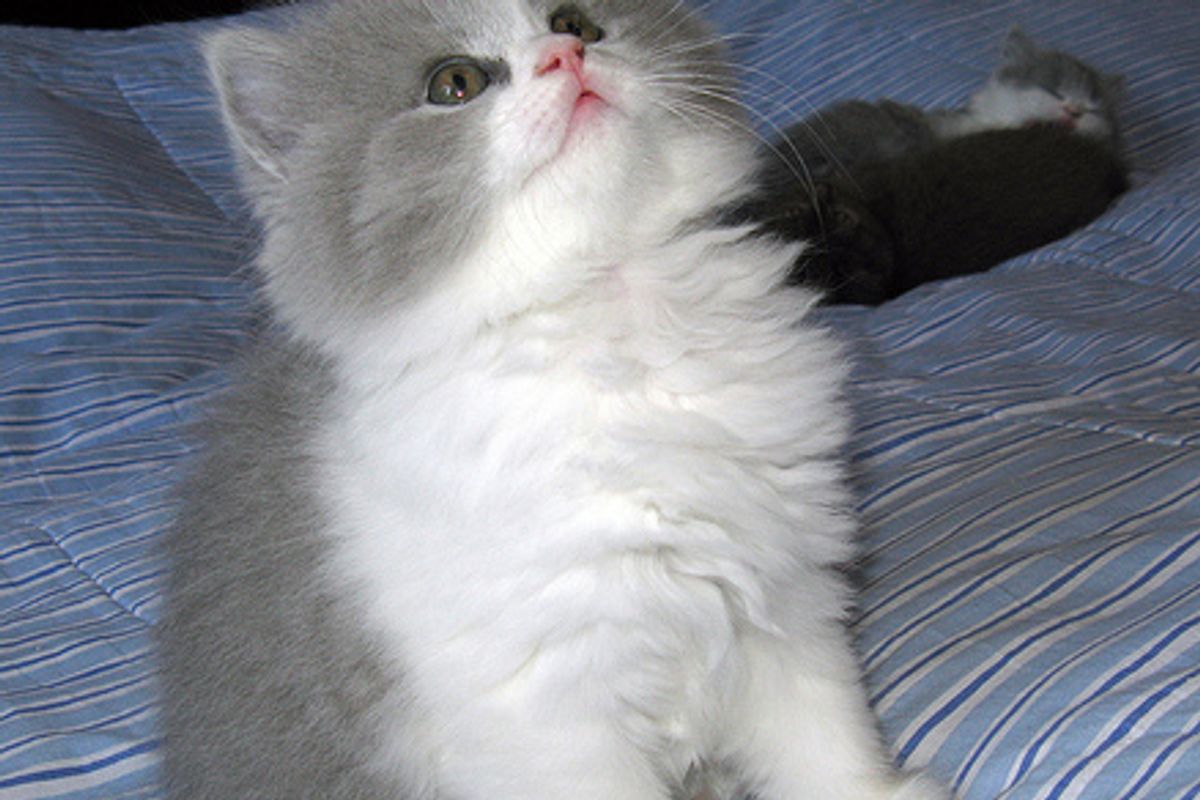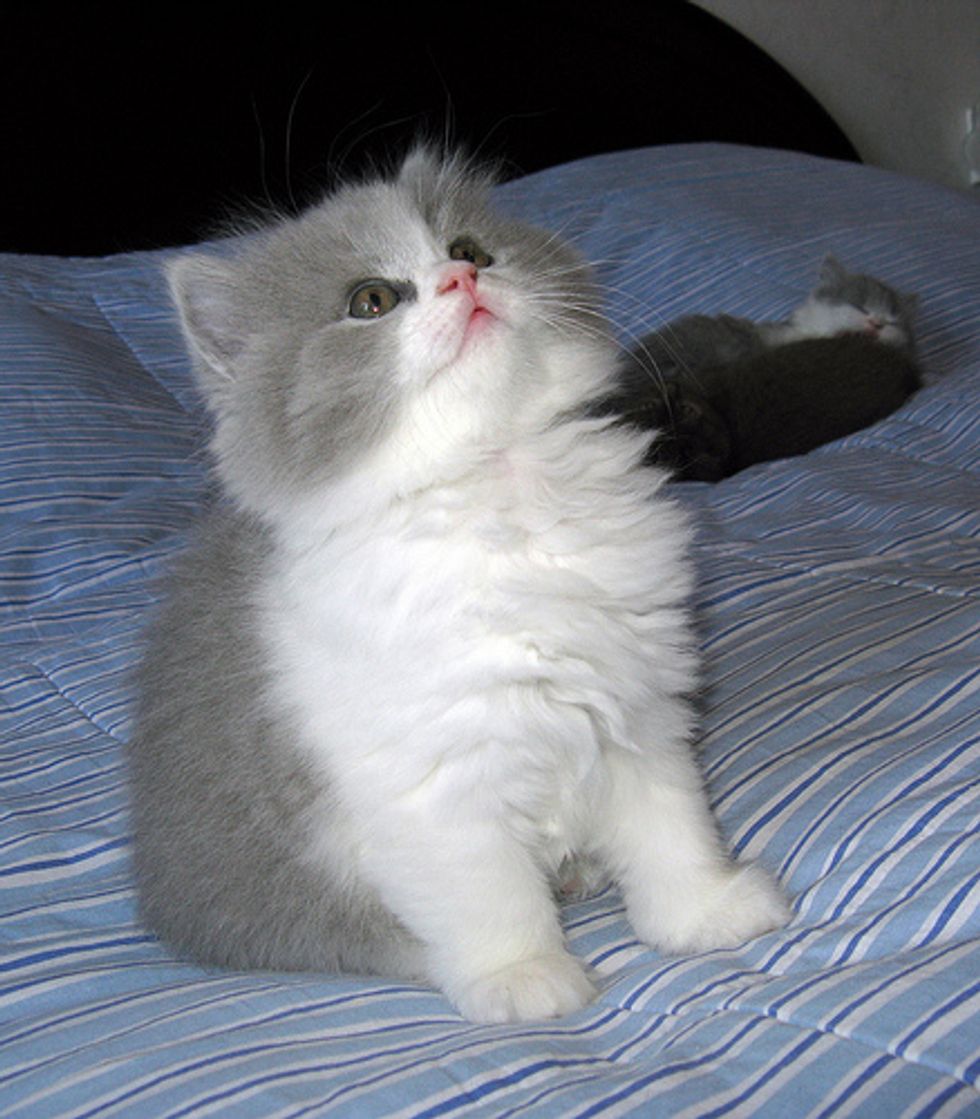Place food and water away from the litter boxes. Cats are very clean animals. If you place food and water too close to their elimination, they may refuse to eat.
- If you have multiple cats, feed them in separate bowls instead of one communal bowl. In a multi-cat house, the dominant cat will most likely take over the bowl and leave little food for the submissive cat. Most of the time, cats do not like to share one bowl.
- Separate food and water. Cats may be sloppy when it comes to eating. If food and water are placed closely to each other, it is possible to spill some water over into the food bowl. By separating food and water, the food can stay fresh longer.
- Wash all the bowls daily, including the water bowl and refill it with fresh water. Cats tend to salivate when they drink water, leaving slop in the water bowl. Also, if you have a long haired cat, your cat may shed into the bowl, creating sediment on the bottom of the bowl.
- Purchase bowls according to each cat's preferences if needed. Some cats are allergic to plastic bowls. Also, plastic bowls tend to accumulate bacteria and fungus, so ceramic or stainless steel bowls maybe better choices for cats.
- If you are feeding your cat wet food, do not allow it to sit out for more than 30 minutes. You can put it back in the fridge if your cat cannot finish it.
- Make sure that your cat will have a peaceful mealtime experience.
- If you have multiple cats, make sure everyone gets its fair share of food. If one of your cats tends to eat more than others, you can separate them in different rooms during mealtime.
- Make sure no body is bothering your cat(s) while they are eating.
- If your cat is showing abnormal eating behavior, consult a veterinarian as soon as possible.
Image:


